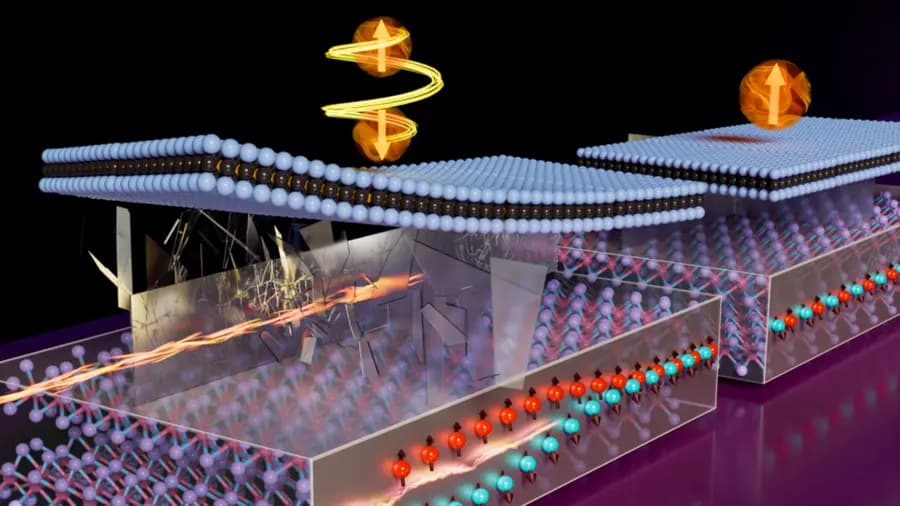The rapid expansion of global computational capabilities, powered significantly by advancements in artificial intelligence, has ushered in an era of heightened energy demands associated with computing infrastructures. This surge in energy consumption has spotlighted the critical need for the development of more energy-efficient computing devices, a challenge that the scientific community is fervently addressing. In this pursuit, magnetic materials have emerged as a promising foundation for crafting computing devices such as memories and processors, potentially leading to “beyond-CMOS” computers that could operate on significantly less energy than their traditional counterparts.
A notable shift in research has been towards the exploration of two-dimensional van der Waals magnets, a new class of magnetic materials that hold the promise of superior scalability and energy efficiency. These materials can potentially transform magnetic devices into commercially viable solutions by utilizing magnetization switching—akin to how transistors use open and closed states to represent binary code—to perform computations. This transition towards 2D magnetic materials represents a pivotal evolution in the quest for more sustainable and efficient computing technologies.
Despite the clear advantages of 2D magnetic materials, their integration into practical computing applications has faced significant hurdles. Initially, these materials were operational only at cryogenic temperatures, much like superconductors, which limited their practicality. Moreover, for their integration into computing devices, it was imperative that these materials could be controlled electrically, without the reliance on external magnetic fields. Overcoming these challenges to enable electrical switching of 2D magnetic materials at temperatures exceeding room temperature has been a crucial objective for researchers aiming to leverage these materials in the next generation of eco-friendly computing devices.
A breakthrough in this domain has been achieved by a team of researchers from the Massachusetts Institute of Technology (MIT), who have successfully designed a device utilizing a “van der Waals atomically layered heterostructure”. This device incorporates a 2D van der Waals magnet, specifically iron gallium telluride, interfaced with tungsten ditelluride, another 2D material. Their research, published in Science Advances, demonstrates the capability of this two-layer device to toggle between binary states with just the application of electrical current pulses, eliminating the need for an external magnetic field.
Lead author Deblina Sarkar, associated with the MIT Media Lab and the Center for Neurobiological Engineering, emphasizes the groundbreaking nature of their device, highlighting its potential to facilitate ultra-low power and environmentally sustainable computing technologies. The device’s unique atomically layered structure not only allows for improved interfaces but also opens up possibilities for gate voltage tunability and the development of flexible and transparent spintronic technologies.
Our device enables robust magnetization switching without the need for an external magnetic field, opening up unprecedented opportunities for ultra-low power and environmentally sustainable computing technology for big data and AI
Further enhancing the potential of this technology, the research delves into the manipulation of electron spins in heavy metals like platinum or tantalum, a process central to the electric control of magnets. The team’s innovative approach involves breaking two mirror symmetries in the material’s structure to produce an out-of-plane spin component, essential for inducing field-free magnetic switching. By selecting tungsten ditelluride for its inherent ability to break one of these symmetries without external intervention, the researchers have paved the way for more efficient and scalable magnetic computing devices.
The implications of this research extend beyond the immediate technical achievements. By significantly reducing the energy required for magnetic switching, this novel design heralds a new era of computing devices that not only promise enhanced energy efficiency but also align with broader sustainability goals. With ongoing exploration of similar low-symmetry van der Waals materials and collaborations aimed at scaling the manufacturing process, the future of computing may well be rooted in the principles of energy efficiency and environmental responsibility, as evidenced by the pioneering work carried out at MIT.
The original media coverage can be accessed here.
The header image is courtesy of the researchers.
The original research paper can be accessed in the Science Advances journal.













Responses (0 )